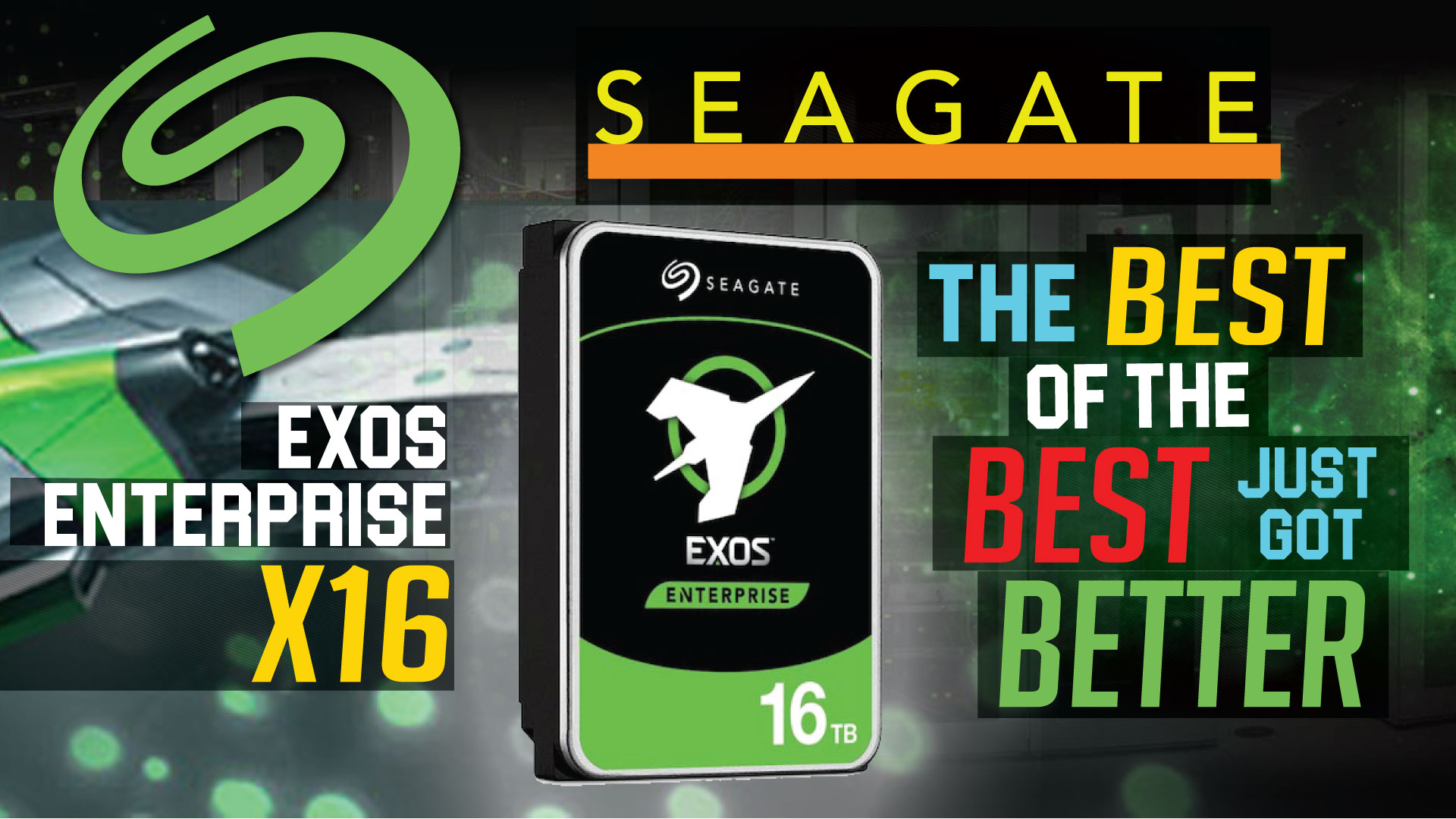As our sample is not the retail version, we cannot comment on the shipping container that the Exos X series will come in. Based on past experience however, Seagate does usually combine a slick shipping container with plenty of information that goes over what a specific model is intended to offer. As such it should be easy to figure out if it is right for your needs or not… though when it comes to Enterprise storage devices you should already know if they are right for you or not.
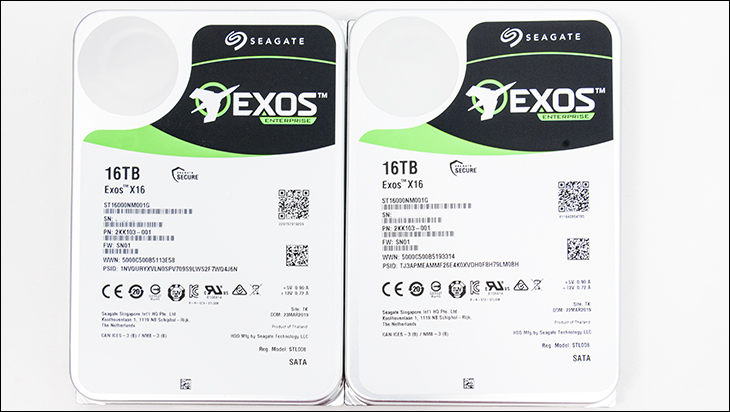
Much like any of the 16TB capacity Seagate drives you would be hard pressed to tell their basic, entry level model from the top tier Exos X series. Put simply, all are built to such a high standard that the exteriors all look very similar. With that said, if you do pay close attention you may notice a bit more attention to detail, and a bit better finishing on the Exos X16… but that is about it. This is because all the tech that goes into building a flagship model like the Exos X16 trickles down to the rest of the line-up… but most of it is invisible to the naked eye. Seagate really is not like Apple. They are all about function over form. So yes, Seagate pulls out all the stops for the flagship Exos X line-up but you probably will never see the difference… but it is there.
Of course, if you do not have multiple lines to compare and contrast, the latest 16TB capacity Exos X model is going to be impressive. It is heavy. It exudes durability. It basically will feel more like a little tank (or metal brick depending on your POV) in your hands compared to the older hard disk drive you are replacing it with.

So instead of talking about the looks or construction of the chassis lets go over what Seagate has included. First, though let’s go over the basics. Much like the lower priced models the Seagate Exos X16 16TB has multiple on the PCB anti-vibration sensors. Sensors which are more precise than those found on lower models. This is because unlike basically any other series the Exos series has no limitations in the number of drives that can be used in the same server rack. Have a 42U server rack and literally want to cram as many hard drives as will fit into that rack? No problems. Seagate expects mega or hyperscale storage servers to be spec’ed out just like that and have built this drive to withstand that level of vibration, heat output, and general abuse which would kill the typical hard disk drive.
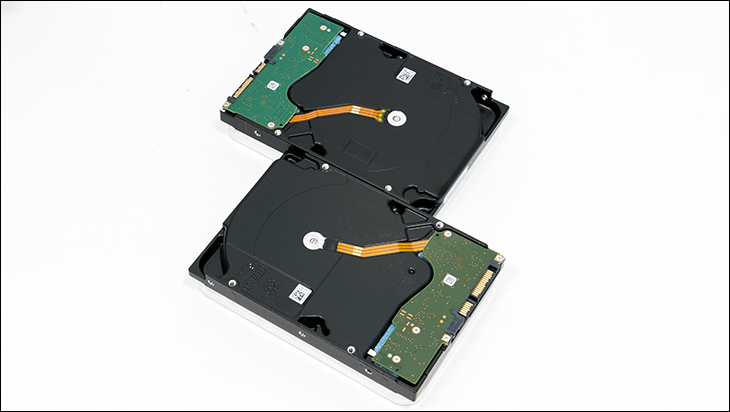
This is also why other robust features like dual-plane balancing are included. Heck, this started with the predecessors of the Exos X line and then worked its way down to the likes of the IronWolf. Once again, if you can think of a durability feature, the Exos X line has it. This is why it can not only boast unlimited drive array size abilities, but also 550TB yearly world load, 24/7/365 for five year warranty, an Annualized Failure Rating (AFR) of 0.35 percent, and a MTBF (as Enterprise consumers are conservative and like having all the specifications) of 2.5 million hours.
Some rather esoteric features not usually seen though are also included. For example: PowerChoice. When thinking about hard drives… few will ever think about their heat output, and power input requirements. After all they do not make much heat, and single digit wattage requirements are usually a rounding error in most builds. When thinking about hundreds or thousands… it does add up (and so too does the air conditioning bill to keep the heat in check). This is why the PowerChoice feature has been included.
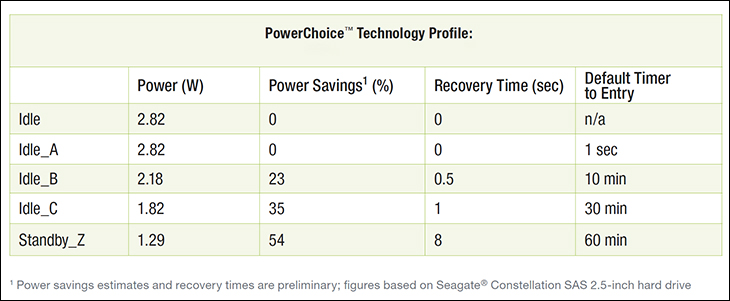
PowerChoice is a continuation of the older PowerBlance and PowerTrim power saving features Seagate has been refining for a long, long time now. In the most simplistic terms, PowerChoice allows the hard drive to enter deeper and deeper idle states and thus use less and less power during idle periods. To be a bit more precise, most hard drives series have two states: active and idle. Some add in an extra idle state for increased power savings. PowerChoice allows the administrator (via the server controller) the luxury of configuring five power states: active, standard idle, Idle_A, Idle_B, Idle_C, and Standby_Z. Each of these additional ‘idle’ states is a deeper and deeper ‘sleep’ state that consumes less and less power. Of course, each state also takes longer, and longer for the drive to ‘wake up’ from (aka ‘recovery time’) and once again be able to accept I/O storage requests. In the real-world it really is a balancing act between power saving and responsiveness, with each build having slightly different requirements (more on this in a moment).
The default for each state is (usually) 1 second for typical idle (which has zero power saving but equally zero recovery time), idle_A is 10 minutes (with about 20-25 percent power savings and yet only adds a half second delay), idle_B is 30 minutes (with about 35 percent power savings and only 1 second delay) and then the biggest: Standby_Z which takes an hour to kick in but basically halves power requirements (but has a whopping 8 seconds recovery time). To get this promised power savings, more and more of the drive is ‘shut down’. For example, when the drive enters Idle_B state the heads are unloaded, whereas Idle_C ups the ante and also lowers the rotational speed of the platters… and standby-Z stops spinning the platters all together and puts the drive in a deep ‘hibernation’ type state (as it basically shuts the drive down so far it requires the SAS/SATA command equivalent of Wake-On-Lan).
On the surface these default time levels are pretty decent. Ten minutes before the heads park is not going to cause premature hardware failure like it did with Western Digital’s “Green” series and its 8 second timer. However, as this is a premium drive the administrator can easily opt to change the default times and can even disable the timers. For example, 8 seconds of recovery may be unacceptable delay for a given storage server so that state can be set to basically never become active. Alternatively, maybe a storage server is only active during work hours but during work hours it is hammered darn near constantly. So having all the additional Idle and standby states set to one hour makes sense. Better still is this configuration is done via standard SAS or SATA commands (respectively Start/Stop Unit or Set Feature command set) so there is no ‘it only works with THIS hardware from THESE companies’ requirements.
Also included (on select model versions) are security features such as FIPS certified (140-2-compliant) self-encryption that also has no noticeably impact on performance. Better still is it features Instant Secure Erase for ease of sanitization (which may not sound all that important, but when talking about securely erasing thousands of drives… it matters). Other options include not only SAS or SATA but dual SAS port models for further enhanced reliability and redundancy.
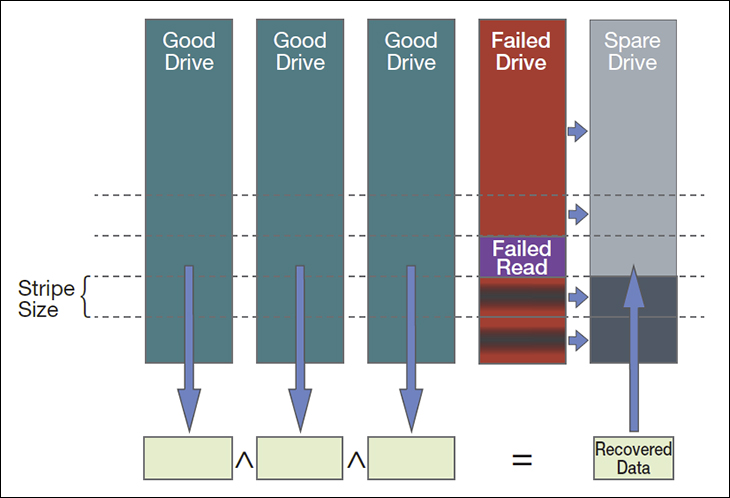
One last feature, that we really… really hope trickles down to even the lowest of Seagate RAID orientated models is RAID Rebuild. As the name suggest RAID Rebuild is technology that it will noticeably reduce RAID rebuild time. How it does this is brilliant. In a typical hard drive failure, the drive is marked as completely offline and stops all activity. With RAID Rebuild, the drive tells the controller it is borked… but then starts compiling a list of exactly what is dead and what is not.
For example, if head 3 died but all the rest are good the drive can tell the controller that all but head 3 data is still good. On advanced enough controllers, all that data which would have otherwise would have to have been recovered via party bits… is copied to the online hot-spare via standard SAS/SATA commands (e.g. Read FPDMA Queued command). Then when every bit of data that is recoverable is copied off to the on-line hot spare drive, the admin then and only then yanks the ‘failed’ drive and replaces it. The controller then rebuilds the missing chunks of data via the parity stripe(s). Put another way, instead of taking a day (or days) to rebuild, the RAID array could be back up and running in mere hours (or minutes vs hours, etc. etc.). This feature alone will easily justify the increased asking price of the Seagate Exos X series to many an overworked system admin. Of course, this is not the first Seagate series to offer it, but this is the most refined and advanced version of it available today.
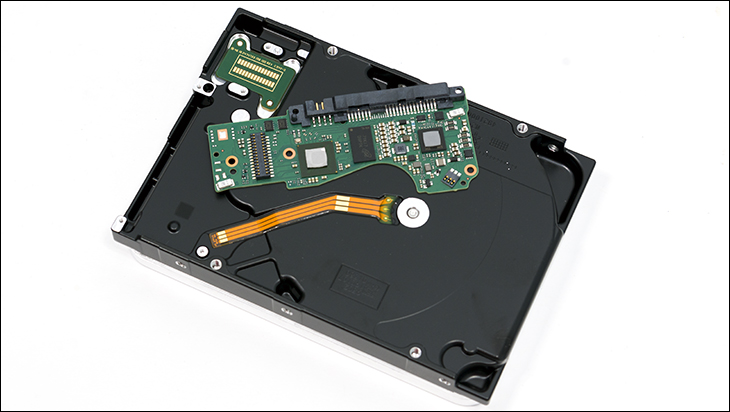
Taken as a whole the Exos X16 allows even mundane users a peak at what is coming to future versions of models they actually will be interested in. It may take a few generations, but Exos X16 really is the ‘Ghost of Christmas Future”… just without the scary undertones. Conversely, for those who are in the Enterprise end of the industry the Exos X16 is the series you should be specifying/demanding/begging for.
